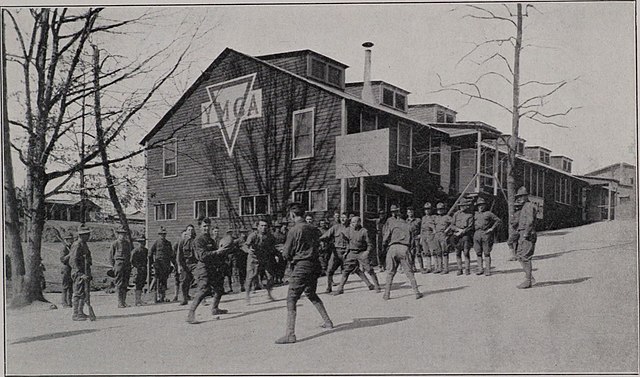In this episode, we talk with Football Archaeology founder Timothy P. Brown and a recent Tidbit he wrote that examines the impact that the YMCA had on the game of football.
YMCA
Introduction
American football was heavily influenced by the YMCA, especially in its early days. The YMCA was founded in 1844 with the goal of providing physical, mental, and spiritual development for young people. As part of this mission, the YMCA began offering sports programs, including football and the movement of "Christian Muscularity" helped propel both American institutions in the late 19th century.
The YMCA continued to play a major role in the development of American football in the late 19th and early 20th centuries. Many of the early rules of football were developed by YMCA coaches and players. Amos Alonzo Stagg was
As American football became more popular, it began to move away from the YMCA. However, the YMCA still plays an important role in the sport today. Many YMCAs offer youth football programs, and the YMCA also sponsors college football scholarships.

The YMCA at Camp Gordon, Georgia, 1918 (Image courtesy of Wikimedia Commons)
Amos Alonzo Stagg
Born August 16, 1862, in West Orange, New Jersey, was College Football Hall of Fame Coach Amos Alonzo Stagg. Stagg was a great innovator of many items we know in football such as the huddle, man in motion, and more. Most of his career was as the head man for the University of Chicago Maroons. Biographer Jennifer Taylor Hall discusses the great Coach Amos Alonzo Stagg and his many contributions to football and sports in general.The Football Archaeology Article on the YMCA
Here is more on the subject right from the source in Tim Brown's original TidBit article on the YMCA and Football.
The YMCA And Football's Growth
The YMCA was a major factor in the development of early football and its athletes, coaches, and innovators. Timothy P. Brown takes us through the history of the subject.Here is more about our Guest
Timothy Brown's FootballArchaeology.com shares a daily football factoid that is interesting in a short read. They uniquely preserve football history, and we are quite happy that Tim has agreed to join us each week to review some of his Today's Tidbits. Click that link, and you can subscribe for free to receive them.
Football Archaeology
Timothy Brown's FootballArchaeology.com is a website dedicated to preserving pigskin history. digs into gridiron history to examine how football’s evolution shapes today's game. The site has a variety of articles, history of football word origins, and Daily Tidbits, which have a daily football factoid that shares some quite interesting items and aspects of the gridiron in a short read. They preserve football history in a very unique way Visit the site at Today's Tidbits.Timothy P Brown
Tim Brown, one of the foremost experts on early college football, is the host and founder of FootballArchaeology.com. Tim's love of the gridiron's past goes beyond just the website. Mr Brown, to date, is the author of three books on football history, appears on various football history podcasts, and has been quoted in articles by The Athletic, The Chicago Tribune, and other publications. He guest authors articles on UniWatch, and his research on the 1920s West Point Cavalry Detachment teams contributed to All American: The Power of Sports, currently on display at the National Archives Museum in Washington, D.C.His books include: Fields of Friendly Strife; How Football Became Football: 150 Years of the Game's Evolution; and Hut! Hut! Hike! A History of Football Terminology, which explores the history of football’s words and expressions and how they became connected to the game.
Special Thanks
We thank Timothy P. Brown for his sharing of knowledge and his time to help us in this episode. Make sure to sign up for Tim's Daily TidBits at Football Archaeology.
The image used int he banner is Courtesy of Wikimedia Commons of The YMCA at Camp Gordon, Georgia, 1918 (cropped)


